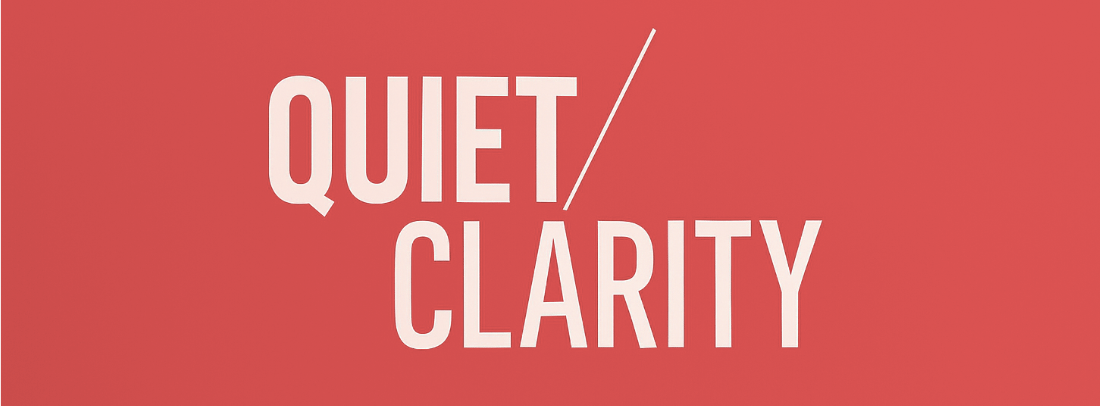
Quiet Clarity is a 2x/week newsletter and podcast for people who want to build a life of presence, depth, and deliberate intention.
How do you make the biggest decisions in your life?
Choose a partner without enough experience and you might settle too early.
Keep searching forever and you might miss the best option while waiting for perfect.
We're told to "follow our hearts," but what if you don't even know what your heart wants yet?
Most of us dive into life's biggest decisions blind, hoping intuition will save us.
But what if there was actually a mathematical way to maximize your chances of finding the best?
Where It Showed Up in My Life
When I was starting my career, I had no idea what I was looking for.
I followed what felt "light" in my body, stumbling into content creation and building a business.
But I never explored other paths systematically.
Recently, a mentor told me to go "all in" instead of taking the middle path.
It made me realize: I'd been making huge decisions without enough data points.
How could I know if this was the right path if I hadn't explored enough alternatives?
That's when I discovered the Secretary Problem and everything clicked.
What the Wisdom Reveals
There's a famous mathematical puzzle called the Secretary Problem.
Imagine you need to hire the best secretary from 100 candidates.
You interview them one by one, and once you reject someone, they're gone forever.
How do you maximize your chances of hiring the best one?
Mathematicians discovered something remarkable: the optimal strategy is to reject the first 37% (that's 100 divided by e, Euler's number).
Don't hire anyone in that first group, just observe and learn.
Then hire the first person who's better than everyone you've seen before.
This gives you a 37% chance of finding the absolute best candidate—the highest probability possible.
But here's where it gets profound.
This isn't really about secretaries. It's about how we make any irreversible decision with limited information.
Dating. Choosing a city. Finding a career. Picking a life partner.
The math reveals a deeper truth: You can't recognize "best" without experiencing "good enough" first.
Those first 37% aren't failures or waste—they're calibration.
They teach you what you're looking for.
They show you what "better" actually means to you.
Without them, you're choosing blind.
Naval Ravikant brought this up in a podcast, applying it to dating.
Date around first—not to be reckless, but to understand what you value.
Then commit to the first person clearly better than everyone before.
The algorithm works because it balances two competing risks:
Settling too early (before you know what's out there).
Searching too long (and missing the best option while waiting for perfect).
How I'm Trying to Live Now
Have I explored enough to trust my judgment, or am I deciding blind?
I've started applying this principle to major decisions, recognizing which are "one-way doors" (hard to reverse) versus "two-way doors" (easily changed).
For one-way doors, I follow the algorithm:
Dating: If I expect to seriously date 10 people in my life, I'd explore with the first 3-4, then commit to the first who's clearly better.
Career: Try different paths early without pressure to commit, then go all-in when something clearly outshines the rest.
City: Visit multiple places just to experience them, then settle in the first that feels definitively right.
The lesson isn't to be calculating about life.
It's to recognize that you need experience to develop judgment.
In your 20s especially, you have asymmetric risk—huge upside with minimal downside.
This is the decade to fill your "37%" with experiences.
Not to be indecisive, but to calibrate your compass.
I'm learning to take bigger bets now, knowing I've explored enough to trust what feels light.
The middle path is mediocre when you're young enough to recover from bold moves.
Sometimes finding the best isn't about endless searching—it's about searching just enough to recognize greatness when it shows up.

